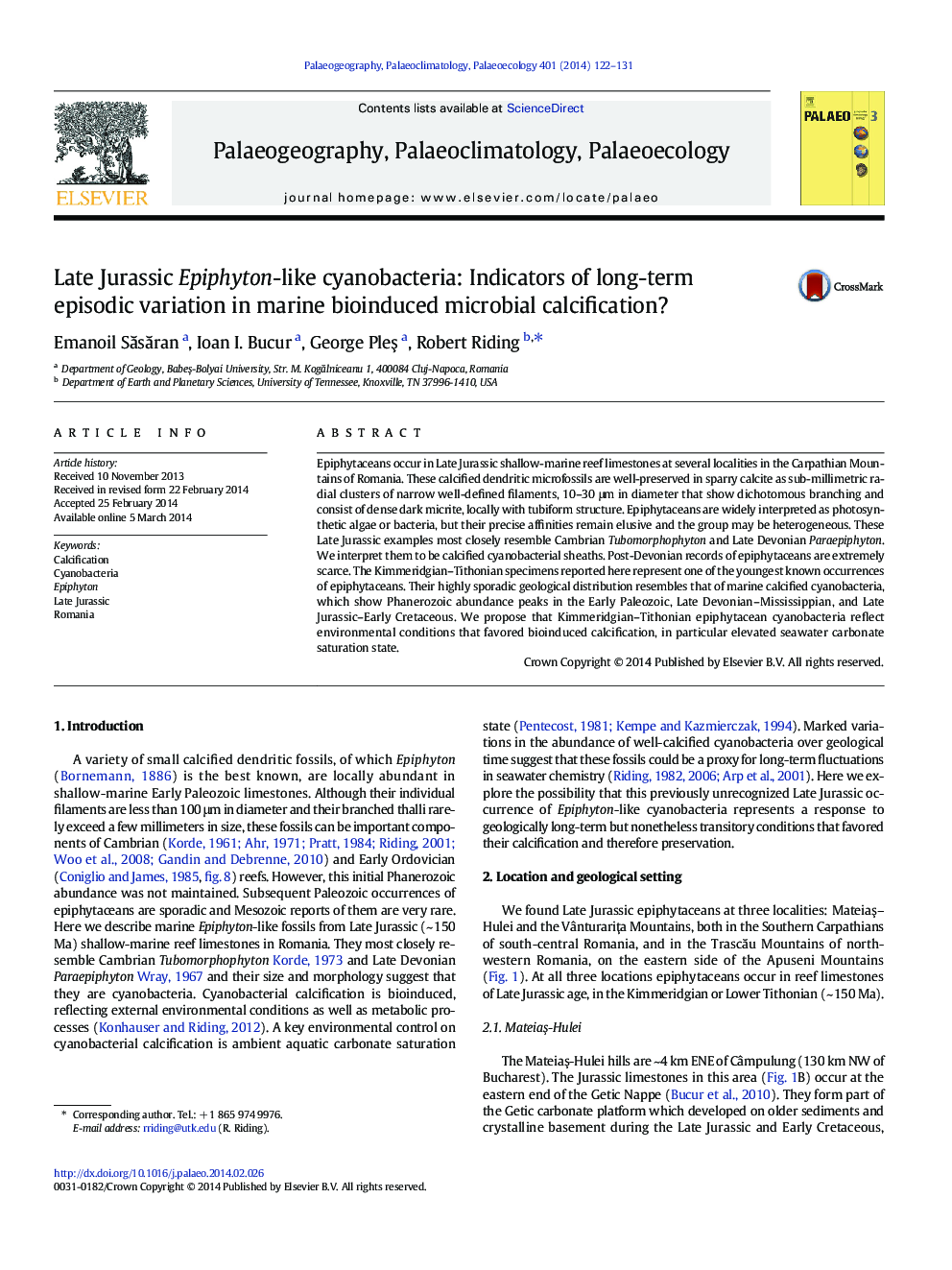| Article ID | Journal | Published Year | Pages | File Type |
|---|---|---|---|---|
| 4466278 | Palaeogeography, Palaeoclimatology, Palaeoecology | 2014 | 10 Pages |
•Epiphyton-like calcified cyanobacteria occur in Late Jurassic reefs in Romania.•This is the first definite record of these distinctive microfossils in the Mesozoic.•They could reflect seawater chemistry that promoted bacterial calcification.
Epiphytaceans occur in Late Jurassic shallow-marine reef limestones at several localities in the Carpathian Mountains of Romania. These calcified dendritic microfossils are well-preserved in sparry calcite as sub-millimetric radial clusters of narrow well-defined filaments, 10–30 μm in diameter that show dichotomous branching and consist of dense dark micrite, locally with tubiform structure. Epiphytaceans are widely interpreted as photosynthetic algae or bacteria, but their precise affinities remain elusive and the group may be heterogeneous. These Late Jurassic examples most closely resemble Cambrian Tubomorphophyton and Late Devonian Paraepiphyton. We interpret them to be calcified cyanobacterial sheaths. Post-Devonian records of epiphytaceans are extremely scarce. The Kimmeridgian–Tithonian specimens reported here represent one of the youngest known occurrences of epiphytaceans. Their highly sporadic geological distribution resembles that of marine calcified cyanobacteria, which show Phanerozoic abundance peaks in the Early Paleozoic, Late Devonian–Mississippian, and Late Jurassic–Early Cretaceous. We propose that Kimmeridgian–Tithonian epiphytacean cyanobacteria reflect environmental conditions that favored bioinduced calcification, in particular elevated seawater carbonate saturation state.
